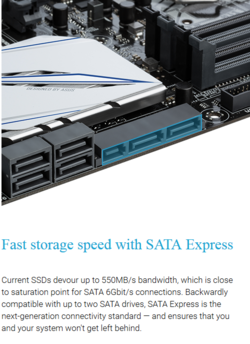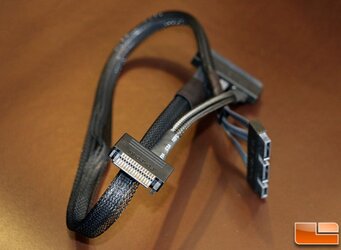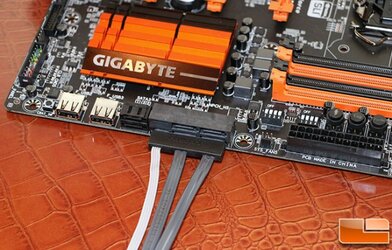- Joined
- Feb 18, 2002
My Skylake Asus Z-170A manual states that:
The SATAEXPRESS connector can support one SATA Express device or two SATA devices.
What is a SATAEXPRESS drive? Links?
Does that mean that two can be connected but would both function at SATA speeds?
Or does it mean if you connect one then the other connector slot would not be functioning?
What is the real life difference in speeds?

I sure don't want either me or my system to get left behind!

By the way what is that third connector ↑ for, next to the SATAEXPRESS connectors?
The SATAEXPRESS connector can support one SATA Express device or two SATA devices.
What is a SATAEXPRESS drive? Links?
Does that mean that two can be connected but would both function at SATA speeds?
Or does it mean if you connect one then the other connector slot would not be functioning?
What is the real life difference in speeds?

I sure don't want either me or my system to get left behind!
By the way what is that third connector ↑ for, next to the SATAEXPRESS connectors?
Last edited:

